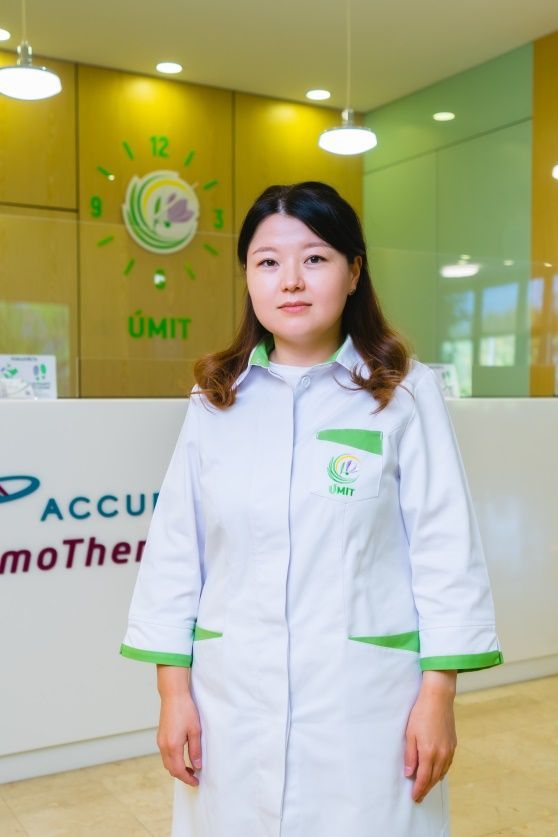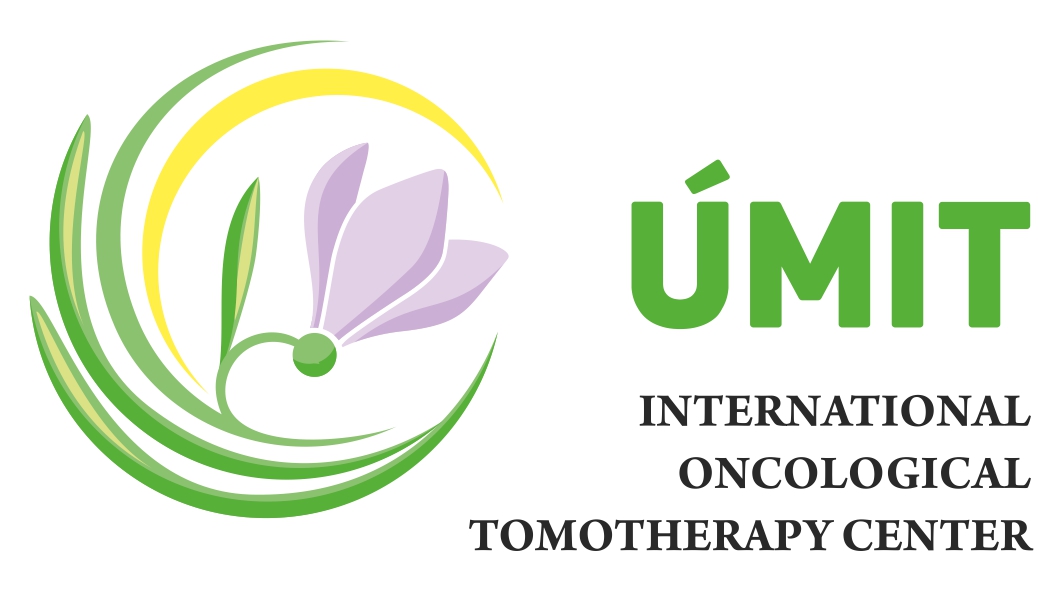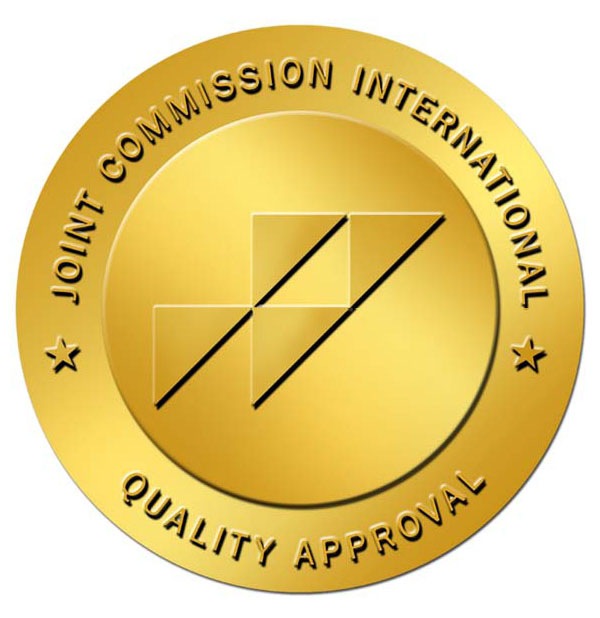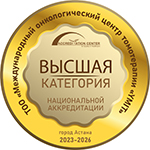
Why do children suffer from cancer?
Saniya Muratbekovna has studied and worked in leading medical centers. She has studied general medicine at the Astana Medical University and Vilnius Medical University, completed residency as a pediatric oncologist-hematologist. The doctor has completed courses at the Great Ormond Street Hospital in London, Curie Cancer Institute in Paris and St. Jude Children Hospital in America. Now Dr. Baiturova works as a pediatric oncologist, at the “Umit” International Oncological Center of TomoTherapy.
WHAT CANCER DO KAZAKHSTAN CHILDREN SUFFER FROM?
– Saniya Muratbekovna, what is the general state of pediatric oncology in Kazakhstan? What types of cancer are most common in children? What is the percentage of hemoblastosis in pediatric oncology?
- In general, the state of pediatric oncology in the Republic of Kazakhstan is good, but there is still something to strive for. According to statistics, up to 700 cases of malignant oncohematological diseases are detected annually in children. About 4,000 pediatric patients are already registered.
There are two specialized centers for inpatient treatment of pediatric oncology in the Republic of Kazakhstan - the Scientific Center of the Pediatrics and Pediatric Surgery in Almaty and the National Research Center for Maternal and Child Health in Astana.
Hemoblastosis occupies 40%, this is the first place among childhood oncological diseases. CNS tumors go second, followed by lymphomas, embryonal tumors, tumors of the osseous system, and other rare species.
HOW NOT TO LEAVE CHILDHOOD CANCER UNNOTICED?
– Saniya Muratbekovna, how is cancer detected in children? What symptoms should alert parents?
– Most often childhood cancer is detected by chance. If these are soft tissue tumors, parents can detect the appearance of a formation that increases in size. CNS tumors are accompanied by general brain symptoms - nausea, headache, vomiting, and depending on which brain structure is damaged, paresis, movement disorders may be added: the child begins to stumble, walk poorly.
Every parent should be very attentive to their child, not to ignore complaints, especially when they complain of headaches or stomach pains. For example, CNS tumors in children are difficult to diagnose, since nothing is visible from the outside, early symptoms are not clearly expressed. This may be, for example, changes in handwriting. It is necessary to find out with the pediatrician all the possible causes of the changes that have appeared.
Hemoblastosis is manifested by specific syndromes, such as hemorrhagic, anemic, hyperplastic. In case of anemic form, weakness, loss of appetite, unwillingness to do something, drowsiness appear, when other syndromes are added, there may be pain in the bones, hemorrhagic petechiae (red dots) on the lower extremities. In case of paraneoplastic syndrome, tumors can imitate an organ and secrete hormones, which can cause symptoms such as high blood pressure or blood sugar. This is very rare in childhood, more often can be found in adults.
All children should undergo professional examinations once a year, with the delivery of a full blood count, vitamin D3 leve. If there are any complaints, go to specialized doctors and undergo necessary examinations.
CAUSES OF PEDIATRIC ONCOLOGY
– There is an expression: children do not have bad habits, but nevertheless children suffer from oncology. Why is this happening? Can increased ultraviolet exposure be considered a risk factor? Or exposure to tobacco smoke? How does the pregnant woman health affect?
– Children have cancer mainly due to congenital genetic mutations, so pediatric oncology occurs from birth, even from the prenatal period - for example, teratomas are sometimes detected on fetal ultrasound.
Bone neoplasms - Ewing sarcoma, osteogenic sarcoma - are more common in adolescence, but they are also based on gene mutations.
Until now, there is no clear data in oncology on what exactly affects the development of cancer, although it is believed that an increase in UV background, exposure to tobacco smoke, and bad habits during pregnancy are all risk factors.
In fact, each person has millions of cells, which at any moment can degenerate into tumor cells. But our immune system reacts to it and destroys them. At some point, the immune system stops recognizing cancer cells, they penetrate into healthy tissues and begin to multiply, damaging the functioning of organs and systems.
There is a genetic predisposition to cancer, for example, eye tumor - retinoblastoma in 5-7% is hereditary. Or a kidney tumor also up to 10-12% can have hereditary nature.

WHAT TO DO WHEN ONCOLOGY IS SUSPECTED IN CHILDREN
– How is the algorithm for the examination and treatment of childhood cancer developed? What is the difficulty of diagnosis in children?
– It should be noted that, in general, we have insufficient cancer alertness of both parents and doctors. It happens that a child's parents spend half a year looking for a pediatric oncologist or take the child to various specialists, but not to an oncologist.
If parents found something in the child or they were alerted by some symptoms, then first they need to contact a pediatrician or general practitioner - this is the primary link. The doctor must put all the symptoms into some kind of diagnosis and prescribe treatment. After the appointed time and treatment, if the child recovers, then the diagnosis was made correctly. But if the child returns for the second and third time, and the state is not better, then the parent should think about more serious diseases. Very often, oncologists, when taking patients, read in the case histories that children had bronchitis or pneumonia several times in a row, the treatment was unsuccessful, or the effect of the treatment was short-term.
Further, if the doctor of the primary link has suspicions of oncology, then he can prescribe the child to undergo an ultrasound, X-ray, CT or MRI. If a neoplasm is detected, the child is sent to a pediatric oncologist.
In each region there is a regional pediatric oncologist hematologist who, based on the data obtained, forms an extract and sends the child for treatment either to Astana or Almaty. Depending on the severity of the condition, we, pediatric oncologists, try to diagnose such a child quickly, sometimes even in one day, and begin treatment. In difficult cases, a council is convened. The specificity of childhood oncology is that today a child with a fairly large tumor may feel fine, but tomorrow he may get in intensive care. Neoplasms in children grow much faster than in adults, so it is very important to diagnose and start treatment as soon as possible.
WHERE IS IT BETTER TO TREAT CHILDHOOD CANCER?
– Saniya Muratbekovna, why do parents often have to take their children to foreign hospitals? Is this a necessity or a desire of the parents? Do they treat better?
– In fact, this is a problem not only of our country, but of any country in the world. I have completed internships in Europe, and everywhere there are parents who want to take their children to other countries for treatment. Parents take their children from London to the States, from the States to London, from Europe to England.
As for Kazakhstan, there are oncological diseases that we treat from A to Z, with a survival rate of up to 90%. We use European treatment protocols. But there are severe cases when we do not have drugs that can be used for this cancer type, because they have not yet entered our treatment protocols. In such cases, parents will try to go to the country where these drugs are included in the protocols.
There are also situations when a second opinion is needed, when we, doctors, doubt. It also happens that we know how to treat a child, but we do not have the necessary therapy. We can send such children for treatment to another country at public expense.
UMIT - HOPE FOR CANCER PATIENTS
– How to get treatment at the UMIT Oncological Center of TomoTherapy (for citizens of the Republic of Kazakhstan and for foreign patients)? What screening and treatment programs do you offer to young patients?
– Our center has two tomotherapy machines from the American company – Accuray, for performing the most modern radiation therapy for oncological diseases. For our citizens, tomotherapy is performed on quota, according to the guaranteed volume of free medical care system. For foreign patients, tomotherapy treatment will be paid.
To get treatment at our center, you need to send your medical record to our e-mail info@tomo.kz or make an appointment for a consultation with a pediatric oncologist or a pediatric oncologist-radiologist. If there are indications for tomotherapy, then we will continue to guide the child according to a proven scheme.

TOTAL BODY IRRADIATION: TBI PROCEDURE IN KAZAKHSTAN
– Tomotherapy is the only method of total bone marrow irradiation for leukemia in children. What is Total body irradiation (TBI)?
– Total body irradiation (TBI) is a form of radiation therapy when a patient’s entire body is exposed to radiation for subsequent stem cell transplantation. This is a very complex technique that requires detailed preparation. Every slight violation of the dosage or the contouring of irradiation can lead to either non-delivering of the desired dose to the tumor, or damaging of neighboring healthy tissues and non-achievement of the desired result. This is very delicate work.
Our center has such an important advantage as its own team of medical physicists, who constantly, may be said, day and night, work with the tomotherapy machine. Due to the joint work of all our specialists, we have successfully carried out the first total body irradiation in the Republic of Kazakhstan.
Total body irradiation has existed since 1954 and is a high-tech therapy type used in the treatment of acute leukemia, acute lymphoblastic leukemia, and less often acute myeloid leukemia. This is a group of oncological diseases that require bone marrow transplantation. Previously, these cancer types were treated with high doses of chemotherapy, which developed serious side effects. Therefore total body irradiation began to be used in the treatment of high-risk groups. This method has fewer side effects, and a 5-year survival rate is 30% better than chemotherapy alone.
TBI is performed in children at high risk, in children with chemotherapy resistance.
We have got our first experience. Now we are planning other patients, that is, this procedure will be performed on a regular basis.
Tomotherapy is also a more effective method in the treatment of CNS tumors. It is difficult for chemotherapy drugs to penetrate the blood-brain barrier and destroy the tumor in the CNS, so the radiation therapy is preferred. The rays penetrate the bone structures and reach the tumor, even if it is located deep in the brain.

BENEFITS OF TREATMENT AT THE UMIT TOMOTHERAPY CENTER
– Saniya Muratbekovna, what is the difference of tomotherapy machines from other radiation therapy equipment?
– The tomotherapy machine is the most gentle and suitable for the procedure of total body irradiation. Tomotherapy uses circularity, not direct beams. The machine spins around the child and evenly irradiates the tumor from all sides. There is much less radiation exposure to nearby healthy tissues. And this means that we will get much less long-term side effects than after standard radiation therapy.
Irradiation is carried out under visual control, 3D contouring is prepared, which ensures high accuracy of dose delivery to the tumor.
– Children are very active. How do you keep child still during radiation therapy?
–There is a pediatric anesthesiologist in our center, who examines the child and selects sedation so that the child does not move during the session. Prescription of sedation is decided depending on the tumor nature and the patient's condition, and not depending on the age of the child. On the one hand, there are five-year-old patients who, even without sedation, can lie still during tomotherapy. On the other hand, in case of CNS tumors, there may be involuntary movements when patients do not control themselves. In such cases anesthesia is required.
In addition, during tomotherapy, we use special fixing devices - mattresses and masks. The mattresses take the exact shape of a lying child, so that the patient takes the same position during each tomotherapy session. This minimizes potential radiation risks.
– How do you think, is it worth getting the second opinion on the diagnostic results in order to accurately confirm childhood oncology? How do you solve this issue in your center?
– The second opinion is not always needed. For example, if there is no doubt about the diagnosis, then there is no need for the second opinion. If something raises doubts among us, the attending physicians, then we will ask for the second opinion from colleagues ourselves. Much of the diagnosing depends on the correct reading of histology. It happens that the experts from whom we request the second opinion ask to send these histological preparations in order to examine them in their laboratories.
– Saniya Muratbekovna, it is probably even more difficult to treat childhood cancer than adult. How do you prepare your medical staff to work with young patients? How do you ensure comfortable staying in the hospital for children and their parents?
– The conditions in our center are quite comfortable, we have a new, bright, spacious building. We practice an individual approach to each patient. We always conduct preliminary conversations with both the child and the parents in order to establish contact and trusting relationships, explain everything in detail and answer all possible questions. We try to celebrate children's birthdays, give them gifts, try to create a kind atmosphere. We also have a psychologist who is involved in difficult cases.
– Up to what age can a parent accompany his child with cancer during treatment in a hospital?
– Any oncological patient from birth to 18 years is accompanied by any of the relatives or a parent. The accompanying person is also given a bed in the ward. Children with cancer need a constant special care and emotional support.
– How is it possible to understand when a child has recovered from cancer?
– It is the most pleasant thing when treating children from cancer. If we carried out the entire therapy schedule, then we performed control CT/MRI for solid tumors or took bone marrow tests in case of leukemia, and if we see that the tests are good, that there are no tumor cells, then it is considered that the child is in remission and is sent for dynamic follow-up for five years, after which it is considered that recovery has occurred.
I have patients who have recovered from cancer, they have already grown up, some of them have even acquired families and still write and call me.

HOW TO GET TREATMENT AT THE UMIT TOMOTHERAPY CENTER
To make an appointment at the UMIT International Oncological Center of TomoTherapy, please call:
Address: UMIT International Oncological Center of TomoTherapy, 42/1 Abylai Khan ave., Astana.







 public offer
public offer










